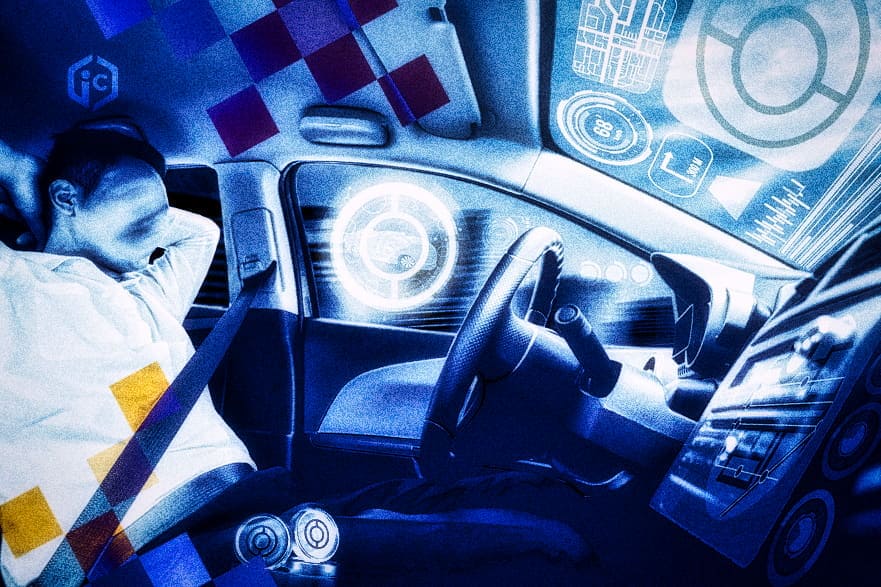Autonomous vehicles continue to evolve as one of the most innovative technological developments of recent times. These types of units at first incorporated very rudimentary functions, but with the passage of time this is changing. CUDOS blockchain has the potential to function as infrastructure regarding sensor data collection and security architecture.
Evolution in the development of autonomous vehicles
In recent years, we have witnessed significant advancement in autonomous car technology. These vehicles, capable of operating without human intervention, have undergone a rapid evolution that has revolutionized the automotive industry. From early prototypes to current production models, self-driving cars have gone through multiple stages of development to improve their performance and safety.
In the early stages, self-driving cars focused on the ability to stay within a lane and maintain a safe distance from surrounding vehicles. As technology advanced, more sophisticated systems emerged that allowed lane changing, automatic parking, and adapting to traffic conditions in real time. These advances were achieved thanks to the development of more precise sensors, such as radars and cameras, and the increase in the processing capacity of on-board computer systems.
Today, we are witnessing a new phase in the evolution of autonomous cars, with the focus being fully autonomous driving. Automotive companies and technology companies are investing significant resources in creating vehicles capable of navigating safely and efficiently without any human intervention. Machine learning algorithms and deep neural networks are being used to improve the perception as well as decision-making of autonomous cars, allowing them to anticipate and respond to complex situations on the road.
What role could the CUDOS blockchain technology play?
CUDOS blockchain technology has the potential to play a crucial role in the development of autonomous vehicles by providing a secure and reliable infrastructure for communication and data exchange between the various components of these units. CUDOS can serve as a transparent processing source, where all vehicle related events are recorded and verified. This allows for greater confidence and security in data collection, which is essential for the efficient operation of these types of vehicles.
In addition to safety, CUDOS technology can also facilitate the exchange of data between different autonomous vehicles and other participants on the road, such as traffic management systems or emergency services. By implementing smart contracts, programmable rules can be established that allow a reliable and automated interaction between the different actors. For example, autonomous vehicles could exchange traffic information in real time, allowing them to make better decisions and optimize their route, thus improving safety on the roads.
Another potential benefit of CUDOS in this regard is the possibility of creating “decentralized markets” for mobility-related services. Through the use of smart contracts, autonomous vehicle owners could share their transportation capacity efficiently and safely. This could lead to a more collaborative mobility ecosystem, where autonomous vehicles can be optimally used, and people can access transportation services flexibly.
Possible combination of CUDOS with AI
Another advantage of the CUDOS infrastructure is the possibility of interacting with other technologies. Thus, for example, it could be combined with AI to improve the decisions of autonomous vehicles. The network could serve as a general architecture for the storage of the data, with the certainty that these were not modified, which provides an extra layer of security.
Being able to combine CUDOS blockchain technology with AI opens a new paradigm that can benefit all parties involved in urban mobility. Drivers can be sure that the data is guaranteed, which allows for much safer driving. On the other hand, pedestrians would also have more guarantees that the security parameters are adequate.
In turn, the CUDOS blockchain technology will allow the collection of information to be sent safely to vehicle manufacturers, who could analyze the data with a view to improving autonomous systems. It may sound like a science fiction story, but these technologies are already being applied to shape a better and safer world.
Conclusion
CUDOS technology could contribute to the development of autonomous vehicles by providing a secure infrastructure for data exchange, facilitating communication between vehicles and other participants on the road, in turn, it would allow the creation of decentralized markets for mobility services. These blockchain applications could improve safety, efficiency, and collaboration in the autonomous vehicle ecosystem, paving the way for broader adoption of this revolutionary technology.
For more information, visit the official CUDOS website and social media:
Website – Twitter – Telegram – YouTube – Discord – Medium – Podcast
This article was originally written by CUDOS UNO, published at https://www.cudos.uno/ and translated by CUDOS UNO.
Original article: ¿Cómo podría contribuir CUDOS para el desarrollo de vehículos autónomos?

